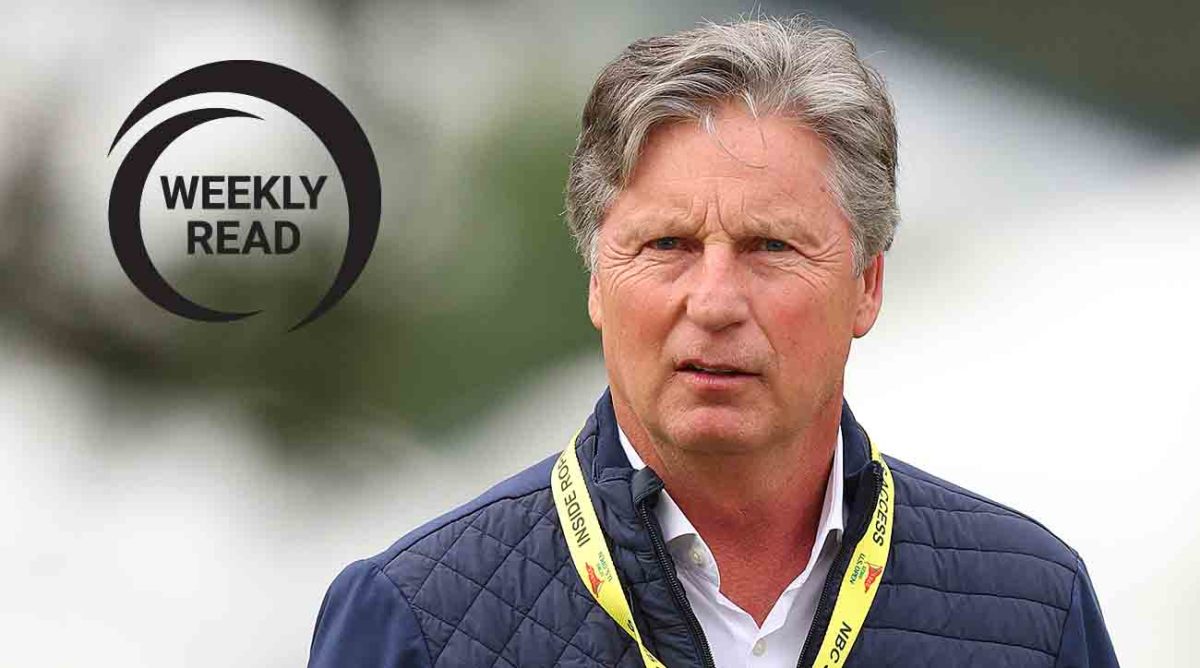'The Best Thing for the Tour To Do Is Make This Deal': Brandel Chamblee Says Pro Golf Needs Unity Now

More Weekly Read: Tiger and the 2024 U.S. Open
Somewhat overlooked as part of a tumultuous week in golf was the $200,000 payday for a golfer who won a qualifying event on Sunday in the Middle East.
You’d have needed to finish top 11 at the recent RSM Classic on the PGA Tour to earn that kind of payday, another reminder of the immense riches flowing through golf now.
Finnish golfer Kalle Samooja earned the top spot in LIV Golf's three-day Promotions event that saw three players earn a spot in the 2024 LIV Golf League. By advancing, they’ve assured themselves of more than $1 million just for teeing it up in 14 events, far more if they have any level of success.
That, of course, pales compared to what Masters champion Jon Rahm is getting to sign with LIV Golf, the Thursday news that rocked the golf world again. The two-time major winner who had repeatedly decried LIV’s format got a nine-figure signing bonus and his own team captaincy.

As big as the initial signings of Dustin Johnson, Phil Mickelson, Bryson DeChambeau, Brooks Koepka and Cam Smith were for LIV Golf, Rahm’s departure from the PGA Tour is the biggest yet.
Signing Rahm and potentially bringing on others doesn’t suggest that LIV Golf and the Public Investment Fund of Saudi Arabia are on a path to peace. Perhaps it was to give them more leverage in the "framework agreement." Maybe it was in retaliation for something Tour officials have done in negotiations. Impossible to know.
But what is clear is the game is more divided than ever, and with a deadline looming for an agreement between the PGA Tour, DP World Tour and PIF, another year of acrimony could be ahead with the potential for a fractured game well into the future.
"If LIV exists in its current form, the PGA Tour will always be susceptible to the poaching of its stars," says Golf Channel analyst Brandel Chamblee. “What if Ludvig (Aberg) turns out to be as big of a star as it looks like he may be? He likely will be courted until they find his price. And ... into the future.
“The best thing for the Tour to do is make this deal, dissolve LIV as soon as possible and unify the game. Saudis win. Professional golf gets dirtied up."
Chamblee has made no secret of his disdain for LIV Golf, criticizing Saudi Arabia’s human rights and sportswashing issues. And he’s been consistent on this well before LIV Golf came into existence. He was critical of the European Tour when it sanctioned a tournament in Saudi Arabia, as well as players who participated.
So it is significant that he believes the PGA Tour needs to work out a deal with the PIF.
Asked why he believes dissolving LIV is possible as part of a deal, Chamblee says: "The seat at the PGA Tour executive board achieves more than LIV could. It makes the Saudis part of the PGA Tour. Legacy and legitimacy. Recognition and respect. LIV was not and could not do that for them."
Chamblee was referring to the PGA Tour Policy Board seat that was outlined as part of the framework agreement for Yasir Al Rumayyan, the governor of the PIF. Rumayyan would also be the chairman of the board of the new company called PGA Tour Enterprises—where the assets of the three entities would be pooled and, in theory, lead to some competitive outlet separate from the PGA Tour.
What Al Rumayyan thinks about all this remains a mystery. He doesn’t do interviews and has not spoken publicly. Chamblee’s belief that he would be willing to dissolve LIV Golf in exchange for the board seat and the accompanying acceptance is certainly possible. All along, it seemed being part of golf’s bigger picture was the main objective.
But recent actions don’t suggest that. Why offer all the money to Rahm? Why continue to negotiate with others? Why make deals with tournament venues into 2025 and beyond? LIV is not operating as an entity that plans to be scuttled anytime soon.
Of course, the $700 billion PIF could easily absorb contracts and pay off venues. It could take a seat at the table and be happy to invest in the game in other ways. And yet, nobody on the LIV side of the divide sees it that way.
They are operating with a business-as-usual mantra and that is a scary proposition for the PGA Tour, which is courting private investment that can’t compete with the PIF if it wants to continue adding players.
All of which makes a deal imperative—for both sides. For all the gains LIV Golf has made by having three of the last five major championship winners as part of its roster, the league has yet to gain much traction, specifically in the United States.
Without cooperation, the idea of getting a viable TV window and significant television rights fees is a far greater struggle. Robust sponsorship is more difficult if the PGA Tour puts up roadblocks. And the Official World Golf Ranking, which is important if there's no access to other events, becomes an even greater concern.
All of that goes away with a deal. It would be in the Tour’s best interests to help with all of that. The new company needs to be profitable and for that to work, LIV Golf—or whatever it becomes—needs revenue and not to be burning cash.
The Tour, of course, could just try and wait it out, but how has that worked so far?
Figuring out what the new company will be and how it will yield the kind of revenue—and equity for the players—is a monumental task. Could it even be launched by 2025?
LIV Golf, despite many of the perceived negatives and struggles, does have a structure in place. It has 12—or perhaps 13—teams. It has a business model that could see the teams sold with significant income coming to the league and, in theory, the new company. All of it becomes easier with a deal because, as Chamblee said, a deal means acceptance.
How would it work? Again, no easy answers, but some back-of-the-napkin scribbling would require both sides to compromise considerably. LIV probably needs to reduce its schedule to eight or 10 events and reconfigure its locked four-man teams. The PGA Tour needs to allow movement between the two entities, perhaps with open LIV spots filled each week.
And to make a schedule work, you could have several LIV Golf events also double as PGA Tour events. If five of them were incorporated into the PGA Tour schedule, that allows a LIV golfer such as Cam Smith to play just 10 more on the Tour to achieve the 15-tournament membership. If you then play 10 for LIV Golf, that’s a 20-event schedule.
How you incorporate players from both into the FedEx Cup, the LIV Team Championship and myriad other factors makes this far from easy.
But peace means getting all of the players together competing against each other. That’s not going to happen in 2024. It might not happen in 2025. And it could never happen if the two sides don’t come together.
